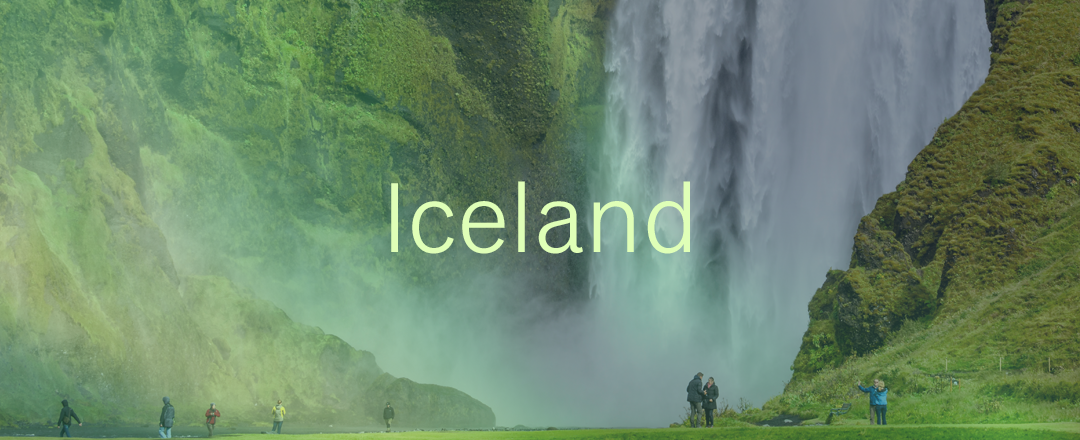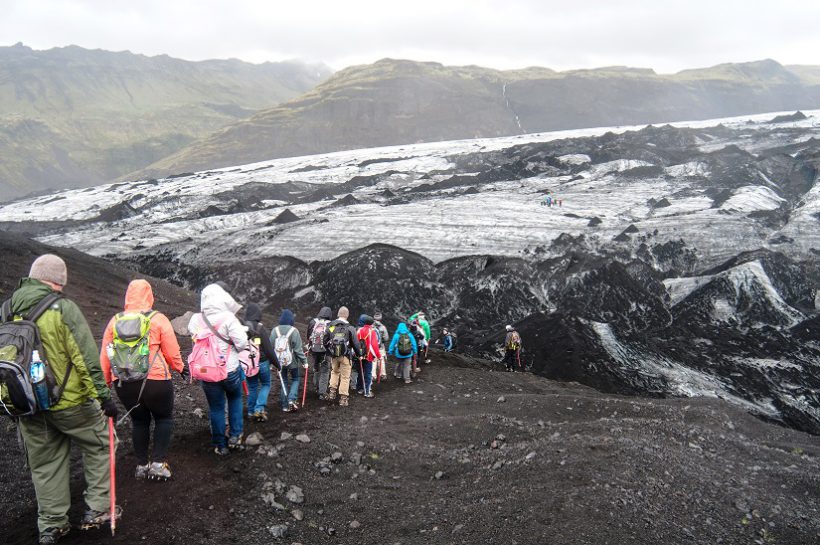Travel + Leisure magazine named Iceland one of the fastest-growing travel destinations in the world in November. And with its fascinating history, awe-inspiring natural sites, and relaxing spots for taking a dip, it’s no wonder why.
Our Iceland: Northern Highlights tour takes you through all of these destinations and more, with an emphasis on the “undiscovered” wonders of Iceland. Cross Iceland off your bucket list and take your students on the off-the-beaten-path adventure of a lifetime.
Read all about what our Iceland: Northern Highlights tour has to offer, and learn a little bit of Icelandic along the way.
Iceland: Northern Highlights (9 days)
Day 1: Halló, Ísland!
Day 2: Reykjavik
“Afsakið”: “Excuse me”
Get situated in the world’s northernmost capital, Reykjavik! Start out with a comprehensive introduction to this colorful city in a walking tour.
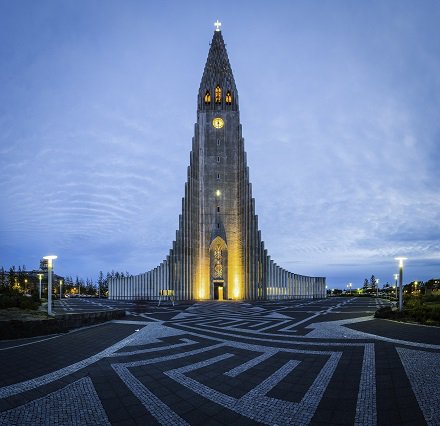
The site of the first permanent settlement in Iceland in 874 AD, Reykjavik features one of the oldest shopping streets in the world: Laugavegur. Located in the city center, you’ll spend some time roaming through what Vogue calls Iceland’s coolest street. The name has an interesting history, too: Laugavegur means “wash road,” since women used to take the road to wash their clothes in the nearby hot springs.
From there, take a trip to some of Iceland’s historic buildings. Stop at Bessastaðir, an 11th-century farm house that has been the residence of Iceland’s president since 1941. Get a glimpse of U.S. political history with a stop at Höfði House, the location of the Reykjavik Summit between Reagan and Gorbachev in 1986. Built in 1909, the house is known for much more than the beginning of the end of the Cold War: Locals also think it’s haunted by the ghost of a young woman.
Then, visit the Hallgrímskirkja Church. One of the largest structures in Iceland and its largest church, you may have already noticed the glacier-inspired building towering over Reykjavik. Get a striking view of the city and mountains from the church’s viewing deck, and be sure to look out for the statue in front: It’s of Leifur Eiríksson (c. 970 – c. 1020) – the first European to discover America.
Finish off your first day with a tour through the Icelandic Saga Museum, documenting early life in Iceland, from the earliest settlers all the way to the 16th century.
Day 3: Hvammstangi
“Takk”: “Thank you”
Leave Reykjavik (don’t worry, you’ll be back later) and head to the fishing village of Hvammstangi. But first, stop at the Settlement Center in Borgarnes. Housed in an old warehouse, this museum features two main exhibits: The Settlement Exhibition, which focuses on the settlement of Iceland, and Egil’s Saga exhibit, which chronicles the life of Egil the Viking, the first poet of Iceland.
Then, get ready to gasp when you watch a series of waterfalls emerge from the ground and into turquoise water. The Hraunfossar waterfall flows through a lava field, giving the impression that the water is coming out of the ground itself.
Finish off the day with a visit to Deildartunguhver, the most powerful hot spring in all of Europe and an excellent place to snap a photo of impressive amounts of steam. The 200 degrees-and-rising water is used to heat homes in two neighboring towns — look out for the pipeline exiting the spring — and you may even use the water at your hotel.
Day 4: Akureyri
“Hjálp!”: “Help!”
Make a trek to Akureyri, the second-largest urban area in Iceland. Another prominent fishing town that was once used as an Allied air base in World War II, its population was a grand total of 12 in the mid-19th century. Today, it has over 18,000 inhabitants, but only five policemen: Like the rest of Iceland, crime rates are some of the lowest in the world.
Move on to Huaganes, one of the smallest towns you’ll ever visit with only 137 inhabitants. Despite its size, Huaganes plays a prominent role as one of Iceland’s prime fishing villages. Check out the town’s famous fish factory, where most of Iceland’s salted codfish is produced.
Day 5: Lake Myvatn
“Ég heiti …”: “My name is…”
Start off the day with a bang at the Godafoss waterfall. More than just a natural wonder, the waterfall is an important relic in Icelandic history. Icelandic lawman Þorgeir is said to have thrown Norse idols into the waterfall after deciding Christianity would be the country’s official religion. For that reason, the 40-foot high Godafoss translates to “Waterfall of the Gods.”
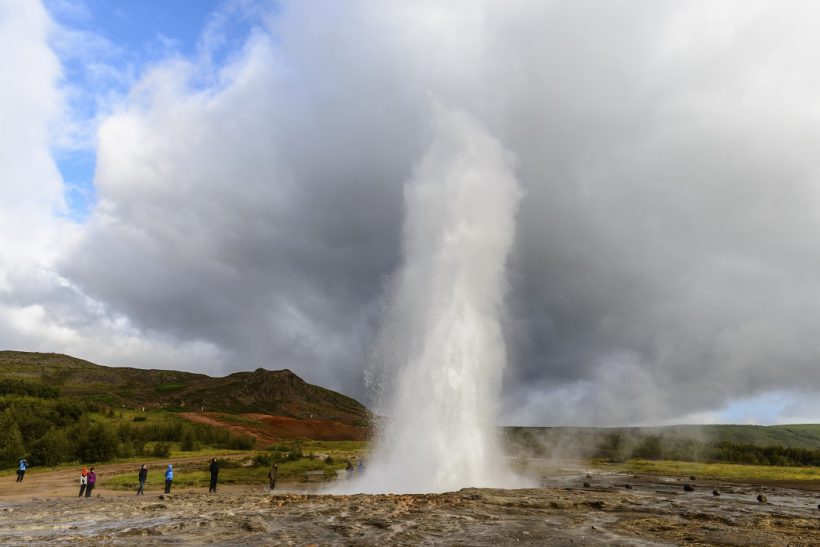
Take a luxurious dip in the geothermal waters of the Myvatn Nature Baths before checking out the surrounding nature reserve. Sometimes called the Green Lagoon, the Myvatn is an excellent alternative to the tourist-heavy Blue Lagoon, and is still frequented by locals. The mineral-rich water gets up to 266 degrees Fahrenheit, and is said to be healthy for your skin.
The nearby Lake Myvatn — created by a volcanic eruption 2300 years ago — is a fascinating natural reserve that is home to a variety of waterbirds, including thirteen species of ducks. Look out for lava-formed islands on the lake, and Marimo, green spheres made of algae.
Day 6: Akureyri
“Hvar er klósettið?”: “Where’s the toilet?”
Head northeast to one of the most powerful waterfalls in the world, the Dettifoss. The Dettifoss’ gray water runs off a glacier and plunges an incredible 330 feet into the canyon below. An unbelievable 500 cubic meters of water goes over the edge every second. Sci-fi buffs might even recognize the waterfall: It was featured in the 2012 film Prometheus.
Go back to Akureyri for a wildlife boat ride through the longest fjord in the country, Eyjafjördur. Watch out for humpback whales, bottlenose whales, blue whales, minke whales, and white-beaked dolphins, and take in the surrounding mountains and hills on the beautiful ride.
If you’re ready to relax again, you’re in luck: Your next stop is the Akureyri thermal pool, which is heated year-round to temperatures of up to 104 degrees Fahrenheit.
Day 7: Back to Reykjavik
“Hættu!”: “Stop!”
The long trek back to Reykjavik will be well worth it when you reach the Grábrók lava field. The largest of three craters, Grábrók was created over three thousand years ago during a fission eruption. Walk through the surrounding lava field, and then climb the volcano and take a look into the crater itself.
Day 8: Golden Circle
“Svifnökkvinn minn er fullur af álum”: “My hovercraft is full of eels”
Finish your trip with a bang on a tour of the Golden Circle! Begin at the Thingvellir National Park, a UNESCO World Heritage Site. Set on a rift between two tectonic plates, Iceland’s first-ever parliament formed at this park all the way back in 930 AD. Because of its geologic location, it’s home to lots of tectonic activity, and because of its beauty, you may recognize it as a Game of Thrones set. Look out for rifts filled with clear water, one of which is a popular place for visitors to throw coins from a bridge.
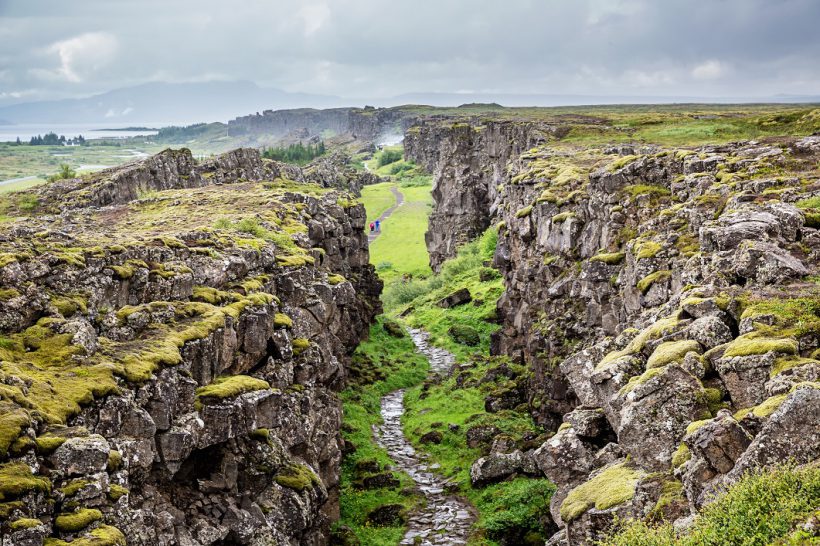
Your next stop is the Great Geysir. The first geyser known to Europeans, the Great Geyser used to erupt boiling water up to 200 feet in the air, beginning about 10,000 years ago. From then, it would erupt rarely or often, depending on tectonic activity. Unfortunately, today it is dormant. Your visit won’t be anticlimactic, though — you’ll also stop at the nearby Strokkur geyser, which erupts every 6-10 minutes to up to 100 feet.
Then, head to watch the Olfusa river disappear into the earth. Walk a little closer to see the massive Gullfoss waterfall, which falls down a steep staircase and over a hundred feet.
Finish off your Golden Circle tour with a relaxing stop at Efstidalur farm, a working dairy farm that serves delicious gelato. Watch the cows through the windows and enjoy the unique experience of seeing where your food comes from while you taste the different flavors. You’ll do the same at the Fridheimar eco-farm, where you’ll get to taste tomatoes grown at the family-run farm and learn how they’re able to grow them year-round in Iceland’s climate, including by importing bees to fly around the greenhouses.
Day 9: Bless, Ísland!
Can’t wait to plan your trip to Iceland? View the full itinerary for Iceland: Northern Highlights, and contact us to get started.

